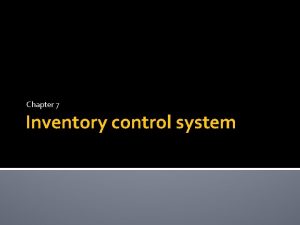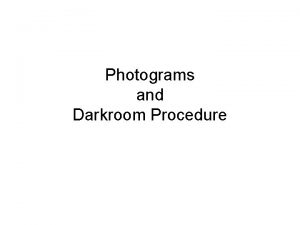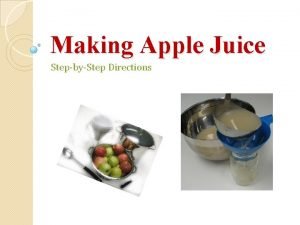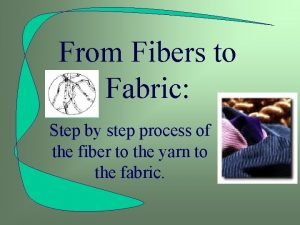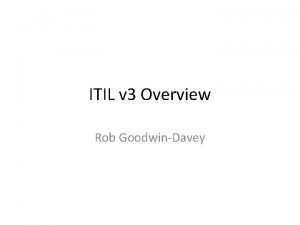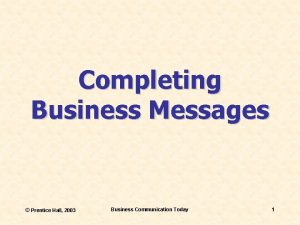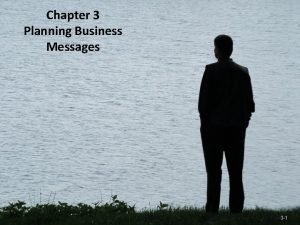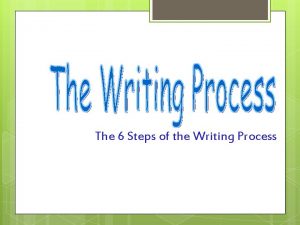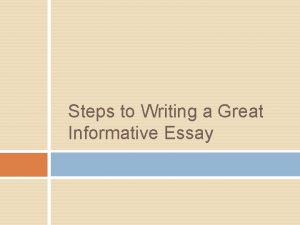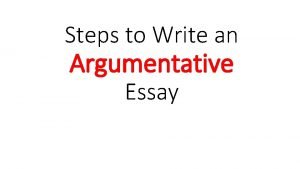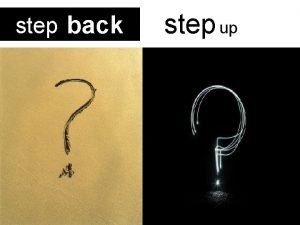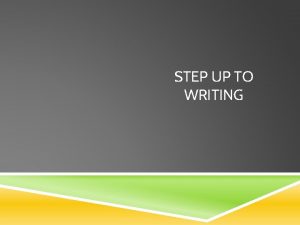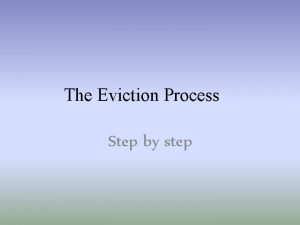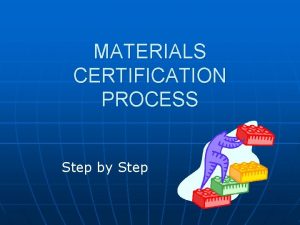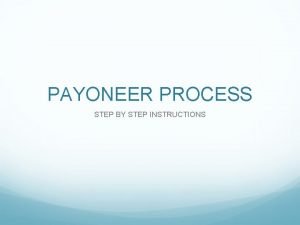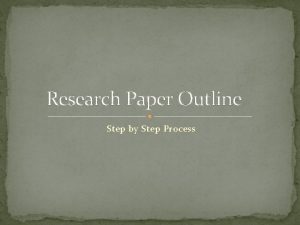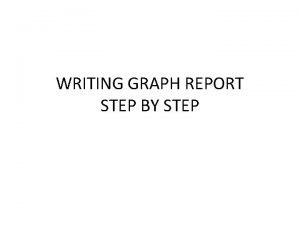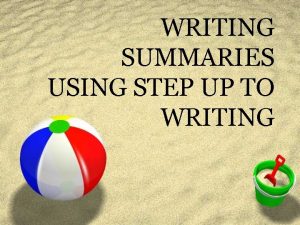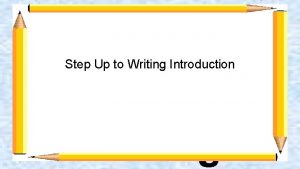The Writing Process The Writing Process u Step















- Slides: 15

The Writing Process

The Writing Process u Step One: u Step Two: u Step Three: u Step Four: u Step Five: Pre-Writing Drafting Conferencing and Revising Proof-reading and Editing Publishing

Things to remember u Writing is not linear; you may move back and forth between the steps u Always keep your purpose, point of view, and audience in mind when writing u Words are powerful; choose them carefully

Step One: Pre-Writing u u u u u What you do before you write; think about purpose and audience Brainstorming Reading Researching Imagining Clustering/Idea Web Chart or graph Illustration or drawing Free writing Writer’s Journal

Drafting u Beginning to write your essay u Forming sentences and Paragraphs u Organizing Ideas u Spelling, grammar, punctuation not as important at this stage

Conferencing and Revising Sharing your essay with your writing response group u Group provides specific input u Listen and comment on the work of each member of the group u Listen for unanswered questions, incomplete ideas, lack of supporting detail u Re-write your essay based on the input u

Proof-reading and Editing u Preparing your essay for the final draft u No spelling errors u No grammatical errors u No punctuation errors

Publishing u Sharing your work u Types of publishing – Books – Magazines – Letters – Shared journals – With the class – With your teacher

Elements of an Essay The Introduction u The beginning u Catches the reader’s attention u Helps the reader become acquainted with the topic u Includes thesis statement

Thesis Statement u u A thesis statement: tells the reader how you will interpret the significance of the subject matter under discussion. is a road map for the paper; in other words, it tells the reader what to expect from the rest of the paper. directly answers the question asked of you. A thesis is an interpretation of a question or subject, not the subject itself. The subject, or topic, of an essay might be World War II or Moby Dick; a thesis must then offer a way to understand the war or the novel. makes a claim that others might dispute.

The Thesis Statement u u u It is usually a single sentence somewhere in your first paragraph that presents your argument to the reader. The rest of the paper, the body of the essay, gathers and organizes evidence that will persuade the reader of the logic of your interpretation. Your thesis statement should be specific—it should cover only what you will discuss in your paper and should be supported with specific evidence. Your topic may change as you write, so you may need to revise your thesis statement to reflect exactly what you have discussed in the paper.

The Body u Usually three or more paragraphs, depending on the essay assigned u Organized into paragraphs that share common ideas u Contains supporting evidence for each idea

The Conclusion A writer needs to keep in mind that the conclusion is often what a reader remembers best. Your conclusion should be the best part of your paper. u Stress the importance of thesis statement, u Give the essay a sense of completeness, and u Leave a final impression on the reader. u

The Conclusion Echoing the introduction: Echoing your introduction can be a good strategy if it is meant to bring the reader full-circle. If you begin by describing a scenario, you can end with the same scenario as proof that your essay was helpful in creating a new understanding. Example: Introduction From the parking lot, I could see the towers of the castle of the Magic Kingdom standing stately against the blue sky. To the right, the tall peak of The Matterhorn rose even higher. From the left, I could hear the jungle sounds of Adventureland. As I entered the gate, Main Street stretched before me with its quaint shops evoking an old-fashioned small town so charming it could never have existed. I was entranced. Disneyland may have been built for children, but it brings out the child in adults.

The Conclusion I thought I would spend a few hours at Disneyland, but here I was at 1: 00 A. M. , closing time, leaving the front gates with the now dark towers of the Magic Kingdom behind me. I could see tired children, toddling along and struggling to keep their eyes open as best they could. Others slept in their parents' arms as we waited for the parking lot tram that would take us to our cars. My forty-year-old feet ached, and I felt a bit sad to think that in a couple of days I would be leaving California, my vacation over, to go back to my desk. But then I smiled to think that for at least a day I felt ten years old again.
 Step 1 step 2 step 3 step 4
Step 1 step 2 step 3 step 4 Steps in photosynthesis
Steps in photosynthesis Step-by step inventory process
Step-by step inventory process Whats a photogram
Whats a photogram Process of making apple juice step by step
Process of making apple juice step by step Fabric process step by step
Fabric process step by step Step 1 in 7 step improvement process
Step 1 in 7 step improvement process Three step writing process in business communication
Three step writing process in business communication Planning business messages
Planning business messages Three step writing process in business communication
Three step writing process in business communication Writing process 6 steps
Writing process 6 steps Disking primary teeth
Disking primary teeth Creating a dinosaur sculpture
Creating a dinosaur sculpture Informative essay outline
Informative essay outline How to write an argumentative essay step by step
How to write an argumentative essay step by step Step back step up
Step back step up


